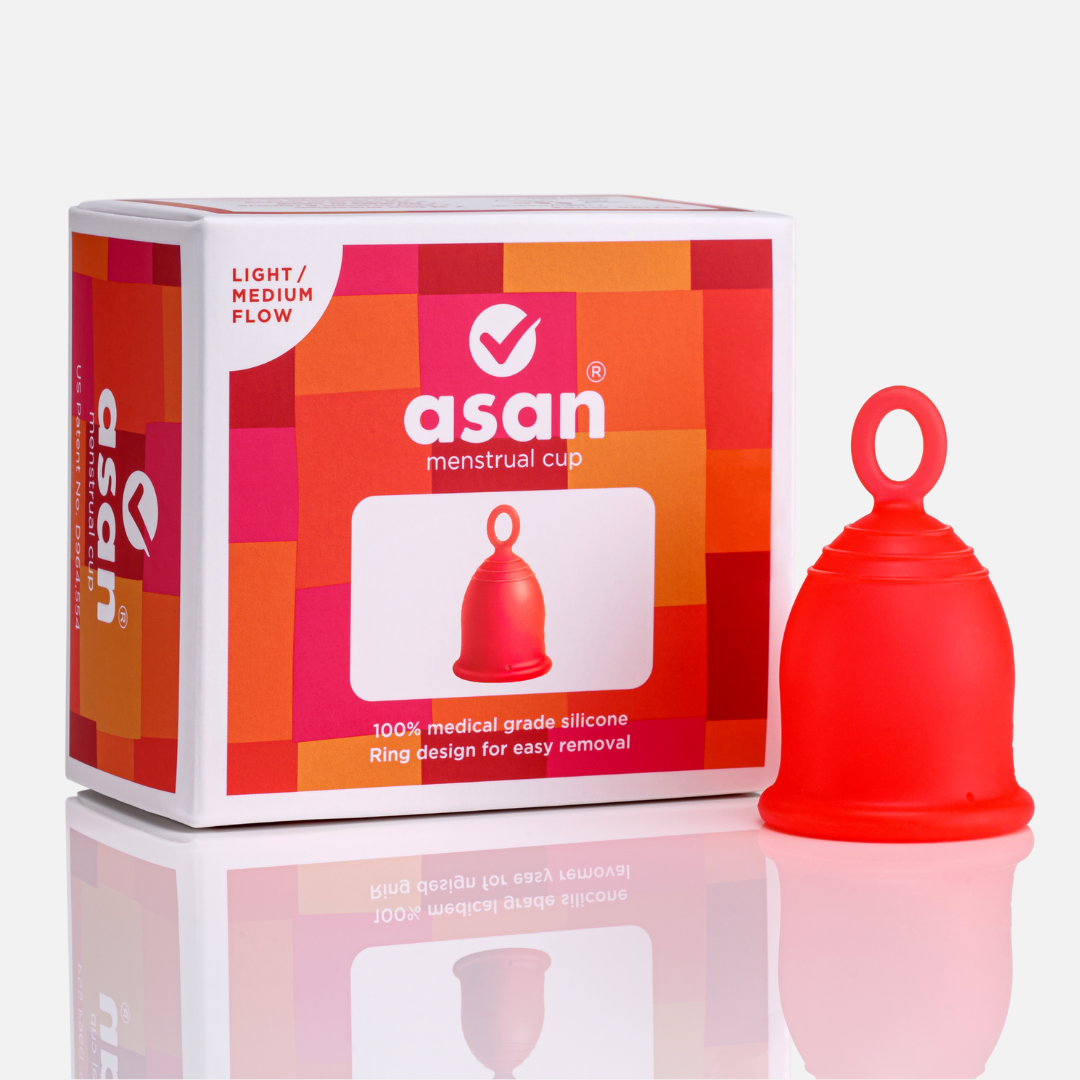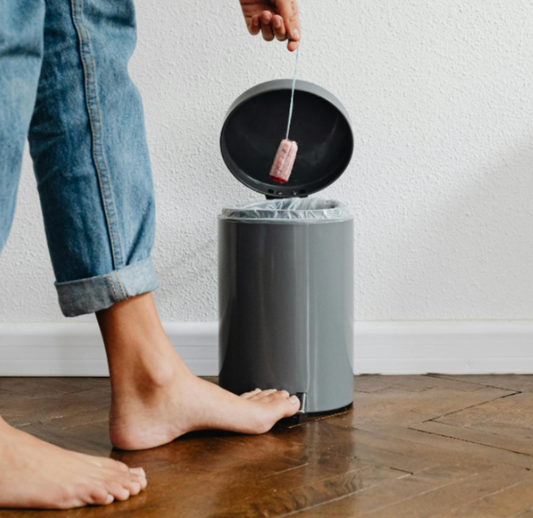 When we hear about measuring our carbon footprint, it has always been related to our modes of transport, how much electricity we consume, or how much water we use at home.
When we hear about measuring our carbon footprint, it has always been related to our modes of transport, how much electricity we consume, or how much water we use at home.
But have you ever wondered, how does menstruation affect the environment? Does the way you manage your period leave behind a carbon footprint and contribute to climate change?
In this blog we will learn about how the way we manage our periods contributes to environmental damage and how periods impact the environment - through understanding the importance of our carbon footprint.
what is a carbon footprint?
A carbon footprint is a measure of the amount of carbon dioxide (CO2) released into the atmosphere due to individual or communal actions.
80% of the world’s energy comes from burning fossil fuels - including oil, coal and natural gas - which releases CO2 into the atmosphere.
 CO2 is the most harmful greenhouse gas (GHG) as its release into the atmosphere causes the earth’s temperature to get warmer, causing climate change - so the effects of our carbon footprint are extremely harmful for the environment.
CO2 is the most harmful greenhouse gas (GHG) as its release into the atmosphere causes the earth’s temperature to get warmer, causing climate change - so the effects of our carbon footprint are extremely harmful for the environment.
While renewable energy is gaining more attention globally, currently almost everything around us operates through the burning of fossil fuels.
From charging our phone and laptops, production of food, and manufacturing period products - these are all examples of carbon footprint contributors.
 how is a carbon footprint calculated?
how is a carbon footprint calculated?
Carbon footprint is measured by calculating the amount of GHGs - such as CO2, methane, nitrous oxide and other harmful gases - that are released into the atmosphere due to the production of a single product or an activity undertaken by a person.
what is a menstrual carbon footprint?
A menstrual carbon footprint refers to the amount of total greenhouse gas (GHG) emissions released in the atmosphere due to how we manage our periods.
Your menstrual carbon footprint will vary according to various factors about your period product. You can start by asking these questions:
- How is the material for my period product sourced?
- What material is my period product made from?
- Is my period product mass-produced?
- Is my period product locally produced?
- How long can I wear my period product in a single menstrual cycle?
- Is my period product reusable?
-
How do I need to dispose of my period product?
While switching to a sustainable period product is a great idea, it is important to recognise that everyone has different needs and circumstances - for example, for some women single-use products are more affordable and readily available.
Not everyone has the ability to be able to factor in their carbon footprint when it comes to deciding which period product to go with - and that is completely fine.
what are sanitary pads and tampons made from?
The plastic content of sanitary products that are single-use is extremely high. Most sanitary pads are made up from 90% plastic, including the leak-proof layer on the pad, the synthetics that soak up fluid and the plastic back-strip. Even the upper layer, which may feel like fabric, is actually a woven plastic sheet.
The single-use plastic used in sanitary pads called super-absorbent polymers (SAPs), is made to soak in large amounts of liquid.
Similarly, tampons contain SAPs in the string, applicator, wrapping and sometimes even in the absorbent cylinder that you insert inside your vagina.
 Even in organic tampons, sometimes the string sticking out is coated with plastics to make it stronger so that you can use it to pull out the tampon after using it.
Even in organic tampons, sometimes the string sticking out is coated with plastics to make it stronger so that you can use it to pull out the tampon after using it.
The issue with SAPs is that it uses huge amounts of fossil fuels generated energy, hence producing a harmful carbon footprint.
what is the carbon footprint of single use sanitary products such as pads and tampons?
To measure the carbon footprint of a sanitary pad or tampon, you need to do a Life Cycle Assessment (LCA).
This involves measuring the total amount of energy used at every point of the product’s life - from the sourcing of materials, production of the product, distribution, and disposal of sanitary products.
Studies have found that a year’s worth of using single-use sanitary pads or tampons leaves a carbon footprint of 8.9kg CO2 emissions - which is equivalent to charging a mobile phone over 1000 times!
So over the course of a lifetime, a single person using sanitary pads or tampons over 40 years of getting their period will leave behind a menstrual carbon footprint of approximately 360 kg CO2 emissions.
 how can we reduce our carbon footprint?
how can we reduce our carbon footprint?
Do you want to reduce your carbon footprint and leave a greener planet for future generations?
Well, you can start by thinking about making environmentally conscious choices when it comes to managing your period.
Single-use sanitary products are not only harmful for the environment, but also our bodies. Read this blog on toxins in single-use period products to learn more.
So let’s talk about what our eco-friendly options are.
There are many organic alternatives available for pads and tampons - but whilst the product itself may be organic and biodegradable, it is important to do your research as many single-use products still contain plastic in packaging or applicators.
In comparison, the more environmentally conscious solution is to make the switch to reusable products - such as period underwear, cloth pads or reusable menstrual cups.
what is the carbon footprint of a menstrual cup?
A good quality menstrual cup has the longest life-span in comparison to other reusable period products - and the lowest carbon footprint.
Switching from a single-use sanitary pad or tampons to a menstrual cup will save approximately 8.9 kg of CO2 emissions over a single year.
So a woman switching from tampons to menstrual cups would have 16 times less carbon impact or less than 1.5% environmental impact in comparison to sanitary pads or tampons!
 what is the best menstrual cup to reduce your carbon footprint?
what is the best menstrual cup to reduce your carbon footprint?
When thinking about making the switch to a menstrual cup to reduce your carbon footprint, the most important factor is the durability of the product.
So ask yourself, how long will you be able to reuse this menstrual cup for?
And of course, the durability of the product depends on the design and quality of the menstrual cup.
The Asan cup is made with Class 6 Medical Grade silicone - which is the highest quality silicone that can be used to manufacture a menstrual cup.
 Our choice of colour (red) and process of dying, which involves the dye being embedded within liquid silicone before the Asan cup takes its mould, ensures that the cup will not stain or fade over multiple uses.
Our choice of colour (red) and process of dying, which involves the dye being embedded within liquid silicone before the Asan cup takes its mould, ensures that the cup will not stain or fade over multiple uses.
It has been designed to last you for at least 10 years - and if cleaned properly and taken care of - will in fact last you much longer.
Imagine only having to use one period product every month - for years to come!

So are you ready to reduce your menstrual carbon footprint? Shop here for the Asan cup now.




